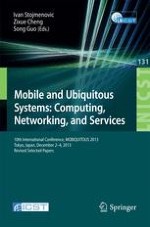2014 | OriginalPaper | Buchkapitel
Reality Mining: Digging the Impact of Friendship and Location on Crowd Behavior
verfasst von : Yuanfang Chen, Antonio M. Ortiz, Noel Crespi, Lei Shu, Lin Lv
Erschienen in: Mobile and Ubiquitous Systems: Computing, Networking, and Services
Aktivieren Sie unsere intelligente Suche, um passende Fachinhalte oder Patente zu finden.
Wählen Sie Textabschnitte aus um mit Künstlicher Intelligenz passenden Patente zu finden. powered by
Markieren Sie Textabschnitte, um KI-gestützt weitere passende Inhalte zu finden. powered by
